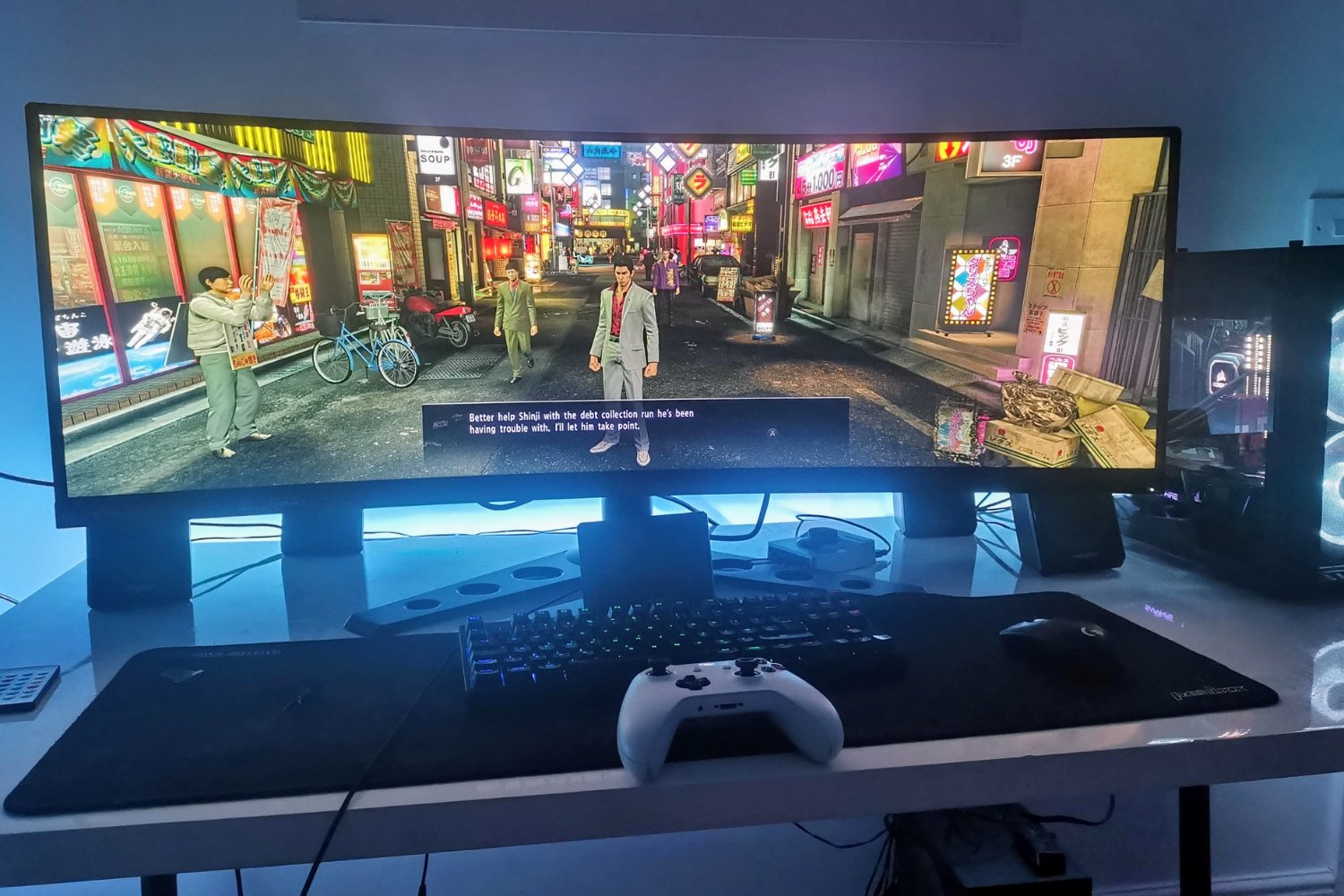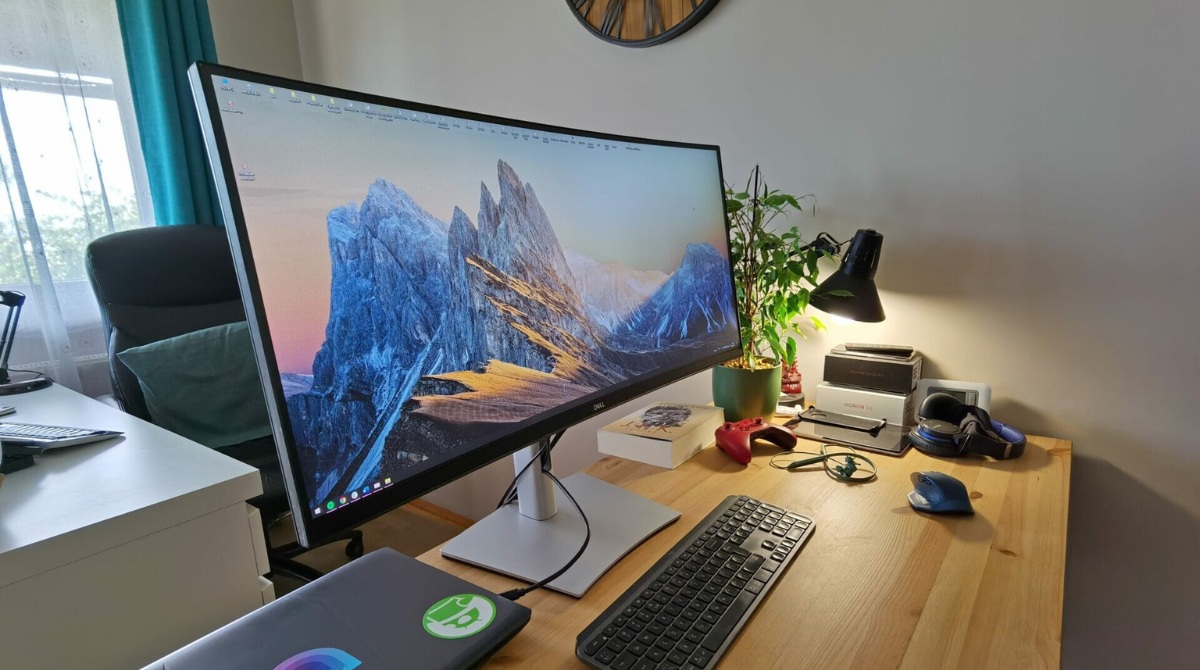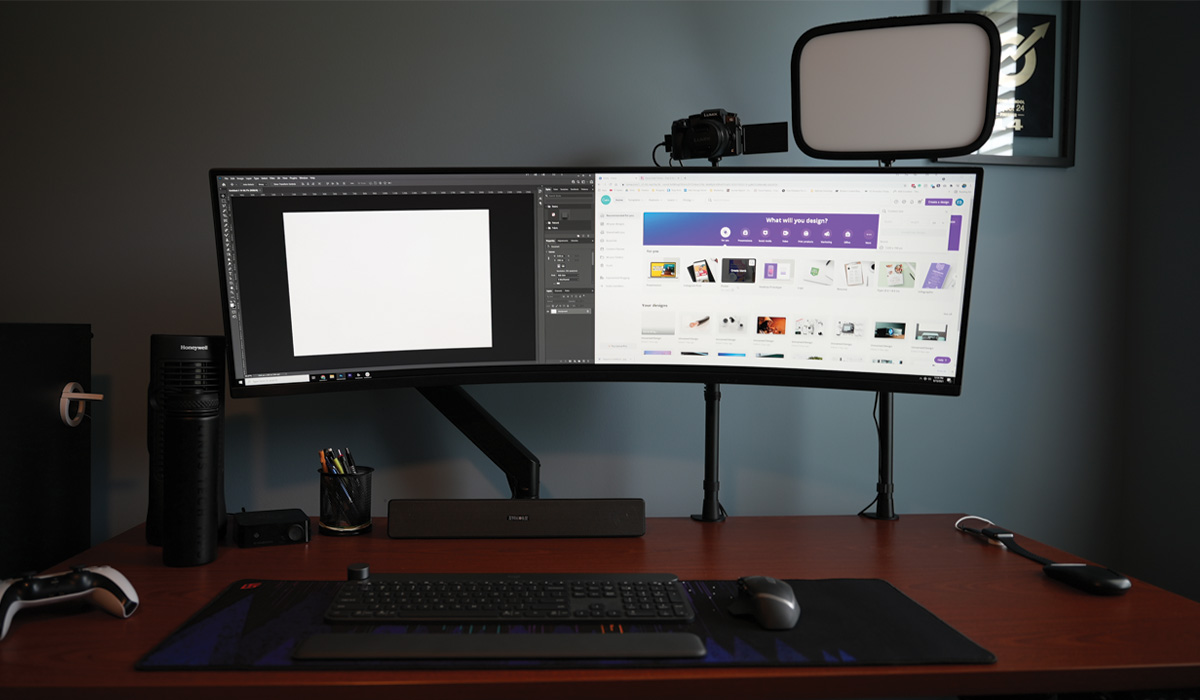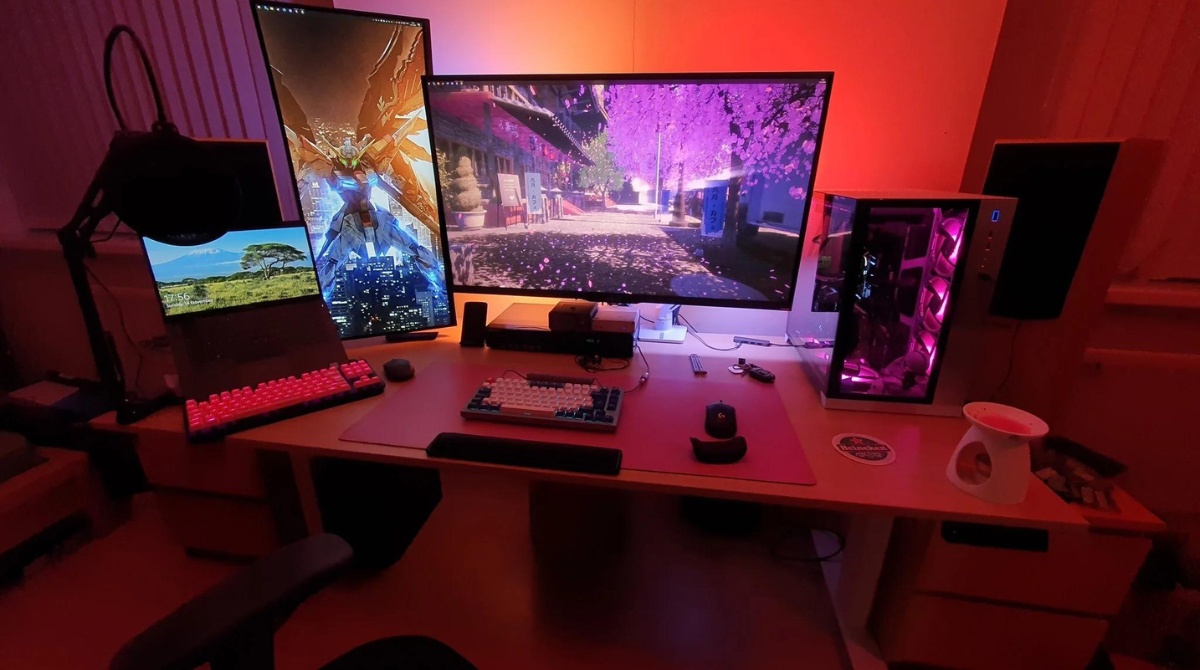Introduction
Welcome to the world of ultrawide monitors! In the fast-paced digital age we live in, having a high-quality display is essential for many aspects of our lives, whether it’s for work, gaming, or simply enjoying movies and videos. When it comes to monitors, one of the most important considerations is the resolution.
Ultrawide monitors have gained significant popularity in recent years due to their ability to provide an immersive viewing experience with a wider aspect ratio. These monitors offer a cinematic feel, allowing you to have a broader field of view and more screen real estate to work with. However, understanding the resolution specifications of an ultrawide monitor is crucial in order to make an informed decision about which one is right for your needs.
In this article, we will dive into the concept of resolution and its relevance to ultrawide monitors. We will explore different resolution options that are commonly available and discuss the advantages of higher resolutions. By the end, you will have a clear understanding of how resolution impacts your viewing experience on an ultrawide monitor and be able to make an educated choice when purchasing one.
What is an Ultrawide Monitor?
An ultrawide monitor is a type of display that offers a wider aspect ratio compared to traditional monitors. While standard monitors typically have a 16:9 aspect ratio, ultrawide monitors come in various aspect ratios such as 21:9 or even 32:9, providing a significantly wider screen space.
These monitors are designed to mimic the immersive experience of a cinema screen, allowing you to see more content horizontally. They are especially advantageous for tasks that require multitasking, such as video editing, graphic design, or even managing multiple documents simultaneously. With an ultrawide monitor, you can have multiple windows or applications open side by side without the need for multiple displays.
Ultrawide monitors also offer a more immersive gaming experience. By providing a wider field of view, they allow gamers to see more of the game environment, giving them a competitive edge and enhancing their overall gameplay. Additionally, many ultrawide monitors come with features such as high refresh rates and adaptive sync technologies, ensuring smooth and fluid visuals during gaming sessions.
It’s important to note that the physical size of an ultrawide monitor can vary, just like with standard monitors. You can find ultrawide monitors in sizes ranging from 29 inches to 49 inches or even larger. The larger screen size, combined with the wider aspect ratio, offers a truly cinematic experience, making it ideal for media consumption and entertainment purposes.
Now that we have a clear understanding of what an ultrawide monitor is, let’s explore the significance of resolution when it comes to these stunning displays.
What is Resolution?
Resolution refers to the number of pixels displayed on a monitor’s screen. It determines the level of detail and clarity you can see in an image or video. The resolution is typically described by the total number of pixels in the horizontal and vertical dimensions.
In simple terms, higher resolution means more pixels, resulting in a sharper and more detailed display. Each pixel is a tiny dot of color that, when combined with other pixels, forms the complete image on the screen. Resolution is measured in terms of width and height, such as 1920×1080 (often referred to as Full HD or 1080p) or 3840×2160 (known as 4K Ultra HD).
When it comes to ultrawide monitors, the resolution becomes even more critical due to the wider aspect ratio. The resolution determines the number of pixels horizontally and vertically along the wider screen. The higher the resolution, the more pixels are distributed across the extended width of the display, resulting in greater detail and sharper images.
It’s worth noting that resolution alone might not be the only factor that contributes to the overall quality of the display. Other factors, such as pixel density, panel type, and color accuracy, also play a significant role. However, resolution sets the foundation for delivering a visually pleasing and immersive experience on your ultrawide monitor.
Resolution options for ultrawide monitors vary depending on the specific model and size. Let’s delve into some of the common resolution options you will come across when shopping for an ultrawide monitor.
The Resolution of an Ultrawide Monitor
When it comes to the resolution of an ultrawide monitor, there are several options available to suit different needs and preferences. The most common resolutions for ultrawide monitors include 2560×1080 (also known as 1080p ultrawide), 3440×1440 (or 1440p ultrawide), and 3840×1600 (known as 1600p ultrawide).
The 2560×1080 resolution is a popular choice for those on a budget or those who prioritize high refresh rates for gaming. It provides a good balance between affordability and performance, offering a decent level of detail and a wider field of view compared to standard monitors.
For users who desire a higher level of sharpness and detail, the 3440×1440 resolution is an excellent option. This resolution is often referred to as “2K ultrawide” and offers a more immersive viewing experience with its increased pixel count. It is preferred by professionals who require a high-quality display for tasks such as video editing, graphic design, or content creation.
For the ultimate in visual fidelity, the 3840×1600 resolution, also known as “ultrawide 4K,” delivers an incredibly detailed and stunning display. This resolution is well-suited for professionals in fields such as photography and video production, where accurate color representation and fine details are crucial.
It’s important to note that higher resolutions require more powerful hardware to drive them effectively. Before opting for a higher resolution ultrawide monitor, ensure that your computer or graphics card can handle the increased pixel count without compromising performance. Additionally, consider the size of the monitor, as higher resolutions combined with larger screen sizes will result in a higher pixel density.
Now that we have explored the different resolution options available for ultrawide monitors, let’s take a look at the advantages of opting for a higher resolution.
Common Resolution Options for Ultrawide Monitors
When it comes to ultrawide monitors, there are several common resolution options available to cater to different needs and preferences. Let’s explore some of these common resolution options:
- 2560×1080 (1080p ultrawide): This resolution offers a good balance between affordability and performance. It provides a wider field of view compared to standard monitors and is commonly used for gaming or general productivity tasks. While it may not offer the highest level of detail, it is a popular choice for those on a budget or those who prioritize high refresh rates for a smoother gaming experience.
- 3440×1440 (1440p ultrawide): This resolution is often referred to as “2K ultrawide” and offers a more immersive viewing experience. It provides a higher level of sharpness and detail, making it a great choice for professionals who require precise color representation and fine details. The 3440×1440 resolution is widely used in fields such as video editing, graphic design, and content creation.
- 3840×1600 (1600p ultrawide): This resolution, also known as “ultrawide 4K,” delivers an incredibly detailed and stunning display. It offers a higher pixel count, resulting in sharper images and accurate color representation. The 3840×1600 resolution is ideal for professionals in fields such as photography and video production, where visual fidelity is paramount.
It’s important to consider the hardware requirements when opting for higher resolution options. Higher resolutions demand more powerful hardware to drive them effectively. Ensure that your computer or graphics card can handle the increased pixel count without compromising performance. Additionally, consider the size of the monitor, as higher resolutions combined with larger screen sizes will result in a higher pixel density.
By understanding the common resolution options available for ultrawide monitors, you can make an informed decision based on your specific requirements and preferences. Now, let’s explore the advantages of opting for a higher resolution on your ultrawide monitor.
Advantages of Higher Resolution
Opting for a higher resolution on your ultrawide monitor comes with several advantages that can greatly enhance your viewing experience. Let’s explore the benefits of choosing a higher resolution:
- Enhanced Clarity and Detail: Higher resolutions, such as 1440p or 4K, offer a greater level of detail and sharpness on your ultrawide monitor. With increased pixel density, images and text appear crisper and more defined, allowing you to see fine details with precision. Whether you’re editing photos, watching movies, or working on intricate designs, a higher resolution display can provide a more immersive and engaging visual experience.
- Improved Productivity: A higher resolution ultrawide monitor can enhance your productivity by providing more screen real estate. With additional pixels, you can fit more windows, applications, or documents on the screen simultaneously. This allows for easier multitasking and smoother workflow, especially for tasks like video editing, coding, or content creation, where having ample space is beneficial.
- Immersive Gaming Experience: If you’re a gamer, opting for a higher resolution ultrawide monitor can take your gaming experience to the next level. The increased pixel count provides more detailed and lifelike graphics, allowing you to fully immerse yourself in the game world. The wider aspect ratio also enhances your field of view, giving you a competitive edge in games that require a broader perspective.
- Richer Colors and Accurate Representation: Higher resolution displays often come with better color accuracy and a wider color gamut. This means that images and videos appear more vibrant, colors are more realistic, and details are preserved. Whether you’re editing photos or enjoying high-definition movies, a higher resolution ultrawide monitor can deliver stunning visuals with vivid and true-to-life colors.
While higher resolution comes with these advantages, it’s important to ensure that your hardware can support the increased pixel count. A capable graphics card and sufficient system resources are necessary to drive the monitor effectively and maintain smooth performance.
Considering the advantages of higher resolution displays, you can make an informed decision about the resolution that best suits your needs and preferences. Now, let’s explore some important considerations when it comes to choosing the resolution for your ultrawide monitor.
Considerations for Resolution
When deciding on the resolution for your ultrawide monitor, there are a few important considerations to keep in mind:
- Intended Use: Consider how you primarily use your monitor. If you mainly engage in gaming or general productivity tasks, a lower resolution may be sufficient. However, if you work with highly detailed visual content or require accurate color representation, a higher resolution can greatly benefit your workflow.
- Hardware Compatibility: Ensure that your computer’s hardware can support the higher resolution you are considering. Verify if your graphics card, processor, and memory can handle the increased pixel count without compromising performance. Upgrading your hardware might be necessary to fully utilize the benefits of higher resolutions.
- Budget: Higher resolution ultrawide monitors tend to be more expensive. Consider your budget and determine the resolution that provides an optimal balance between cost and visual quality.
- Screen Size: The size of your ultrawide monitor should also be taken into account when choosing a resolution. Higher resolutions combined with larger screen sizes result in a higher pixel density, which can provide a more detailed display. However, it’s important to consider your viewing distance to ensure text and graphics remain legible without straining your eyes.
- Future Compatibility: Keep in mind the future compatibility of the resolution you choose. While 1080p ultrawide monitors may currently suffice for everyday tasks, higher resolutions like 1440p or 4K offer a more future-proof option, as content continues to evolve towards higher definition standards.
Considering these factors will help you make an informed decision about the resolution that best suits your needs and preferences. It’s important to strike a balance between visual quality, usability, and compatibility when selecting the resolution for your ultrawide monitor.
Now that we have explored the considerations for resolution, let’s summarize the key points discussed and wrap up our understanding of the importance of resolution for ultrawide monitors.
Conclusion
In conclusion, the resolution of an ultrawide monitor plays a crucial role in determining the level of detail, clarity, and overall viewing experience. Ultrawide monitors offer a wider aspect ratio, providing a more immersive and expansive screen space compared to standard monitors. Common resolution options for ultrawide monitors include 1080p, 1440p, and 4K.
Higher resolutions provide enhanced clarity, sharper images, and finer details. They allow for more screen real estate, improving productivity and multitasking capabilities. Gaming on a higher resolution ultrawide monitor offers an immersive experience with a wider field of view. Additionally, higher resolution displays often offer better color accuracy and richer colors, making visuals appear more vibrant and lifelike.
When considering the resolution for your ultrawide monitor, it’s important to take into account your intended use, hardware compatibility, budget, screen size, and future compatibility. Finding the right balance between visual quality, usability, and compatibility is key.
Whether you choose a lower resolution for budget-conscious or high-refresh-rate gaming needs, or opt for a higher resolution for professional work or an ultimate visual experience, understanding the advantages and considerations of each resolution option will help you make an informed decision.
So, before you decide on an ultrawide monitor, carefully consider the resolution that best suits your requirements, and make your viewing experience truly remarkable.

























